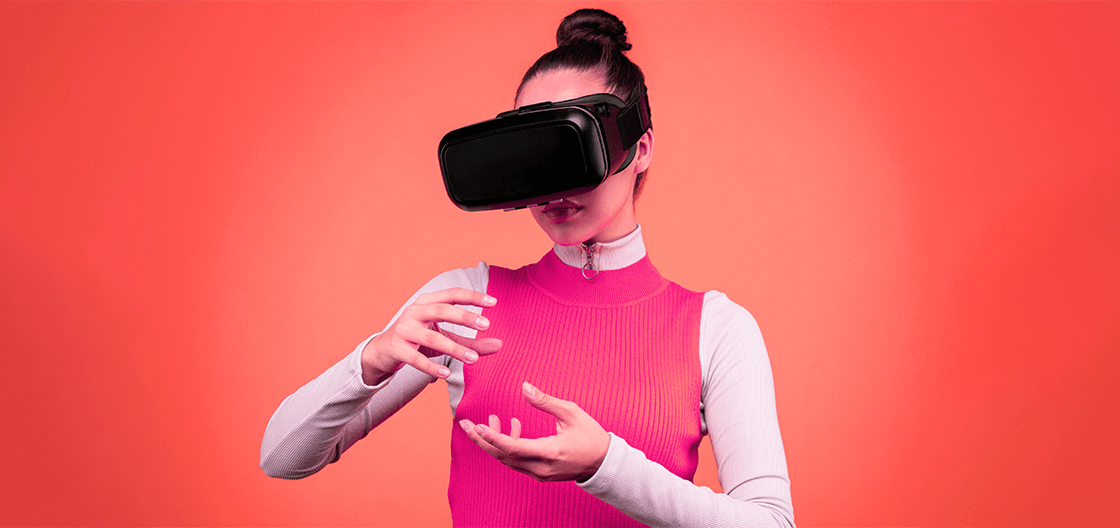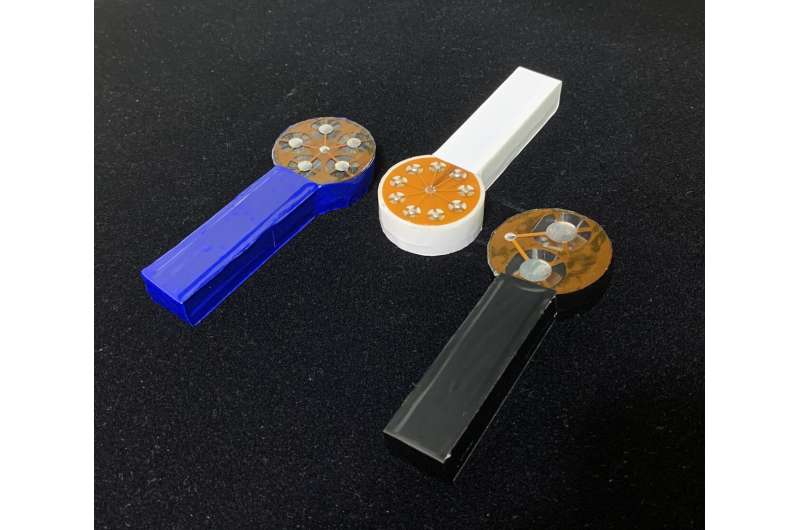AV on the Menu: Can VR Replace Your Holiday Meal?

Imagine this: You sit down at your dining room table. You’re wearing your cozy holiday sweater, candles are lit, and on the fine china you use only for special occasions—a mechanical lollipop? It might sound like something out of Star Trek (sadly, we’re still a long way from the replicator) but for biomedical engineers studying virtual taste, it’s already a reality.
VR worlds are not purely for sight and sound anymore. The boundaries are constantly being pushed to engage all of our senses. The invention of haptic gloves allowed us to feel virtual objects, but have we reached the ability to taste them? Is it possible for a virtual device to replicate the complex flavors of a holiday meal? Let’s find out.
The Science Behind VR Taste Technology
The arrival of taste to the digital world is incredibly nascent but already showing potential. If we look at the building blocks of taste—sweet, salty, sour, bitter, and umami—technology is tasked with replicating these five basic flavors that the tongue can taste. Current research is focused on replicating the sensation of these tastes as a way of tricking our brains into thinking we’re actually tasting them.
If you feel like this is a cop-out, let’s consider: what is a sensation, anyway? By definition, it’s a physical feeling or perception resulting from something happening to your body. The key word here is perception. If your brain thinks you’re experiencing something, say, Grandma’s pumpkin pie, you don’t necessarily have to eat it to get the experience. A perfect example is having a dream in which you ate the most delectable slice of pie you’ve ever had. When you wake up, you may feel just as satisfied as you would if you actually ate it and didn’t just perceive you did.
So, in the case of a digital lollipop, or lollipop-shaped gustation interface (LGI) as they’re called in the research world, your brain is receiving specific chemical signals to experience taste. The process is called “iontophoresis,” which is a fancy way of saying a weak electrical current delivers ions to your body. This method uses food-grade hydrogels infused with flavor chemicals. When you lick the device, the current triggers the release of these chemicals, simulating a specific flavor profile.

How to Simulate a Meal
Simulating a single flavor is one thing, but a full meal is another. A holiday dinner plate is a complex orchestra of different tastes, smells, temperatures, and textures. Think of the savory notes of turkey, the sharp tang of cranberry sauce, and the creamy consistency of mashed potatoes. Replicating the nuances of this experience requires more than just a mechanical lollipop.
The first major hurdle is flavor complexity. Current LGI devices can only produce a handful of basic flavors. They can’t yet capture the layered tastes of a dish that has been roasting for hours. To create a more convincing illusion, some devices now include an olfaction module that releases corresponding scents. Since smell is deeply connected to our sense of taste, this combination significantly enhances the user's perception.
However, we're still lacking the ability to take in crucial sensory information. The crunch of a green bean, the tenderness of the turkey, and the warmth of Aunt May's famous gravy are all missing. Integrating haptic feedback to mimic texture and thermal stimulation for temperature are the next great challenges for AV/VR developers. A truly convincing virtual meal will need to synchronize visual, auditory, olfactory, gustatory, and tactile feedback into one seamless experience.
Applications for AV/VR in Dining
While a complete virtual holiday dinner may still be a few years away, the underlying technology has several exciting applications that could transform how we interact with food.
Immersive Social Gatherings
Imagine hosting a virtual Thanksgiving dinner where family members in different cities can all "share" the same meal. Each person could have a customizable dining experience, enjoying their favorite dishes without the dietary restrictions or cooking limitations of the real world.
Virtual Grocery Shopping
Online grocery shopping could become a sensory experience. Instead of just looking at pictures, you could virtually "taste" a new brand of cheese or a specific type of fruit before adding it to your cart. This could reduce food waste and help consumers make more informed choices.
Education and Training
This technology could be used to teach children about different foods and cultural cuisines in a fun, interactive way. It also has potential in the professional world for training chefs and food scientists, allowing them to experiment with flavors in a virtual environment without wasting ingredients.
The Future of VR Dining
Virtual gatherings were sadly the norm in 2020, but even after our pandemic holidays, there are many reasons you may need to share a feast with your loved ones virtually. Whether due to distance, health, or busy schedules, the journey toward having a fully immersive dining experience—without anything edible—is just beginning.
Replicating the five flavors is only a small piece of recreating a meal. What about making sure people know they’re eating gazpacho and not stew? Or ice cream instead of hot chocolate? How about chunky peanut butter versus smooth, or are you sipping your OJ with pulp or without?
To create the sensations of hot and cold, researchers are again studying the use of electrical stimulation and thermal displays that can rapidly change temperature against the user's tongue. For texture, the challenge is even greater, but work on haptic feedback systems that can simulate sensations like crunchiness or creaminess is underway.
Are We Ready for a VR Meal?
The idea of tasting within a virtual world is no longer limited to science fiction. While we may not be replacing our traditional holiday feasts with digital lollipops just yet, the technology is advancing at an incredible pace. The concept challenges us to redefine what an "experience" truly is. For AV professionals, this new sensory frontier opens up a world of possibilities for creating richer, more immersive content.
Meals bring me immense joy, and as the lines between the real and digital worlds blur, I wonder if a virtual feast could ever be as satisfying as a real one. The act of cooking and the traditions built in the kitchen are a huge part of the holiday meal experience. Like any new technology, virtual dining will have its benefits and its drawbacks. The key is to decide which activities (and senses!) matter most to us, and to keep humanity in our most valued experiences whenever possible.
Craving something more upscale? Check out this projection mapping project at the three Michelin-starred restaurant, Le Bernardin, in New York City.
-
AV on the Menu

AV on the Menu is a series of articles that dive into the intersection of the culinary world and the AV industry. Whether it’s immersive dishes, projection-mapped tables, or digital menus, this series will not only have you drooling but learning about exciting new tech, too.






Please sign in or register for FREE
If you are a registered user on AVIXA Xchange, please sign in